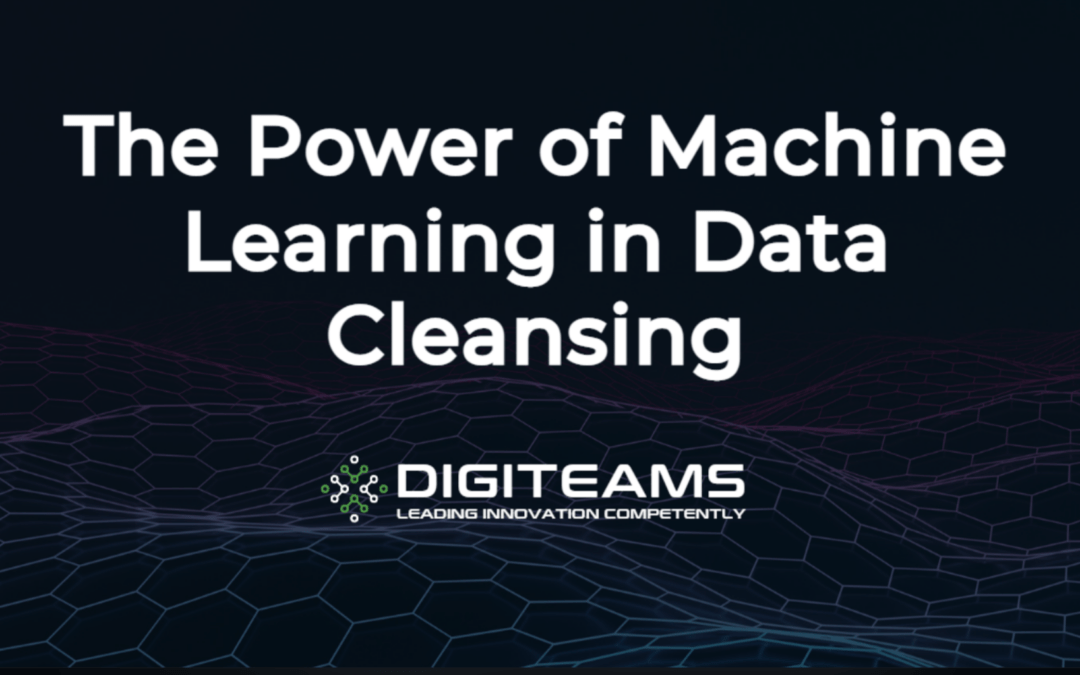In the modern era of digitalisation, data has become the fuel that drives business decision-making, scientific research, and technology advancement. However, for data to be effective and reliable, it must be clean, accurate, and structured, making data cleansing a critical component in any data-related process. Data cleansing, also known as data cleaning, involves detecting, correcting, or removing errors and inconsistencies in datasets.
Machine learning, a branch of artificial intelligence, plays a significant role in data cleansing. Leveraging machine learning in this realm has the potential to streamline processes, improve accuracy, and even discover hidden patterns or errors that would be challenging for humans to detect.
What is Machine Learning?
Machine learning is a field of artificial intelligence that uses statistical techniques to give computer systems the ability to learn from data, without being explicitly programmed. It provides systems the ability to automatically learn and improve from experience, and it’s been used to make significant advancements in a variety of fields, including data analysis, natural language processing, and computer vision.
The Challenges of Data Cleansing
Traditionally, data cleansing has been a time-consuming and error-prone process. This is due to several factors including the enormous volume of data, diversity of data sources, and complexity of errors. Moreover, the ever-growing data sets in the digital age make manual data cleansing a near impossible task. Inconsistent data, missing values, duplicate entries, and outdated information are just some of the issues that often crop up in large datasets. These issues, if not addressed properly, can lead to reduced efficiency and increased costs.
The Role of Machine Learning in Data Cleansing
Machine learning algorithms can be trained to learn from existing data and apply that learning to new, unseen data. When applied to data cleansing, machine learning can be trained to recognize errors or inconsistencies based on previous patterns, making it possible to automatically detect and correct such errors in large datasets. This not only improves the quality of the data, but also reduces the time required for data cleansing, and thus increases efficiency.
Outlier Detection
Machine learning models, particularly those using unsupervised learning techniques, can be effectively used for outlier detection, identifying anomalies that could represent errors or inconsistencies in the data.
Missing Values Imputation
Missing data and attributes are a common issue in data cleansing. Machine learning can predict and fill in these missing values based on the patterns it learns from the existing data, providing a more complete dataset.
Duplicate Detection and Removal
Duplicates in data can lead to incorrect analysis and inaccurate results. Machine learning can recognize patterns and characteristics of entries, effectively detecting and removing duplicates from the dataset.
The Future of Data Cleansing with Machine Learning
The future of data cleansing lies in the continuous development of machine learning algorithms. With the integration of deep learning techniques, it’s anticipated that machine learning models will become more efficient and effective at cleaning data. We can also expect the development of more automated data cleansing tools that will make it easier for businesses and organisations to maintain clean and reliable datasets.
Moreover, as the fields of machine learning and AI continue to advance, we’ll see a growth in self-cleaning databases where AI-powered systems automatically keep databases clean and updated, further reducing the need for manual data cleansing efforts.
AICA: Embracing Machine Learning for Data Quality Assurance
The importance of machine learning in data cleansing cannot be overstated. It provides a powerful, efficient, and accurate way to deal with the massive volumes of data being produced today, and its role is only expected to grow as we continue to progress into the digital age. By leveraging AICAs machine learning algorithms to perform data cleansing, enrichment and comparison, organisations can ensure that their data is of the highest quality, enabling them to make more informed, data-driven decisions.
